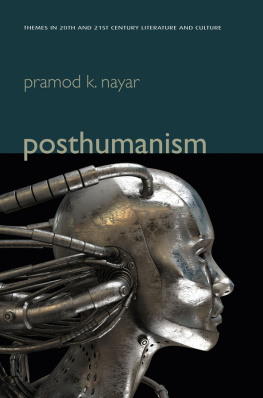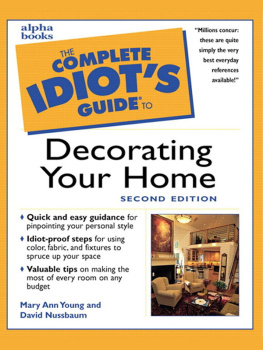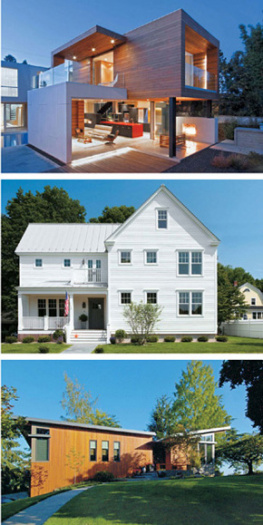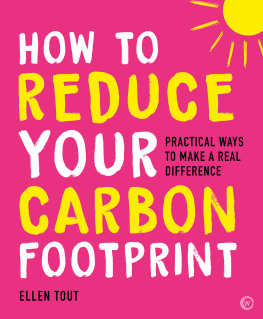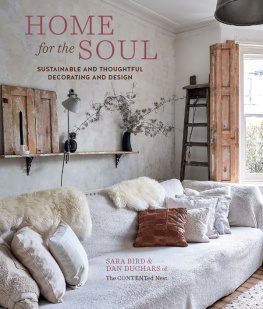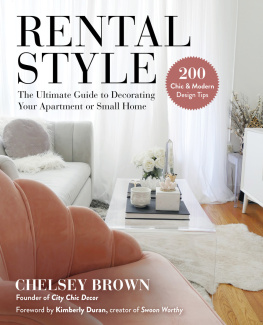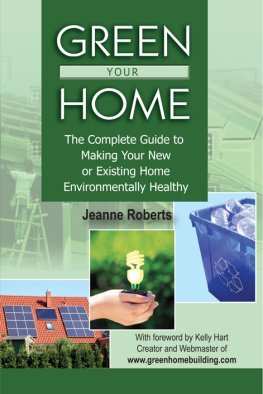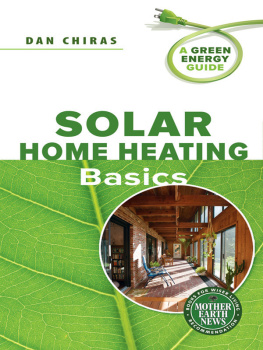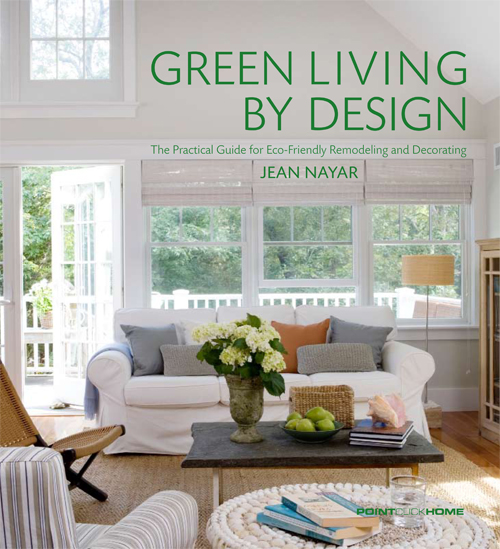Copyright 2009 Filipacchi Publishing, a division of Hachette Filipacchi Media U.S., Inc.
First published in 2009 in the United States of America by
Filipacchi Publishing
1633 Broadway
New York, NY 10019
PointClickHome.com is a registered trademark of Hachette Filipacchi Media U.S., Inc.
All rights reserved. No part of this book may be reproduced or transmitted in any form or by any means, electronic or mechanical, including photocopying, recording, or by any information storage and retrieval system, without permission in writing from the publisher.
First eBook Edition: February 2010
ISBN: 978-1-933231-82-2
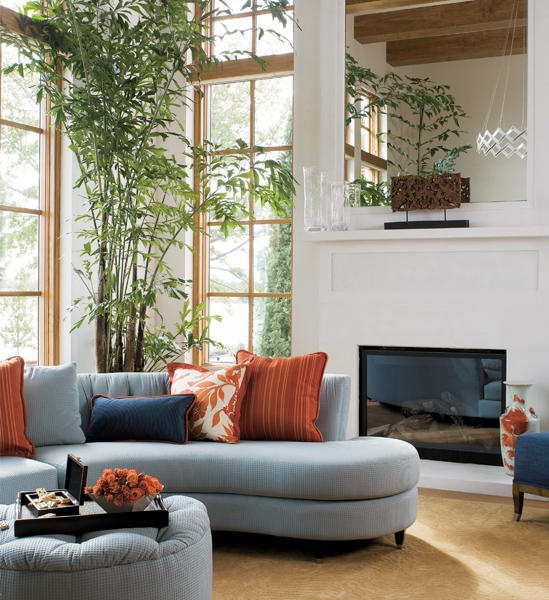
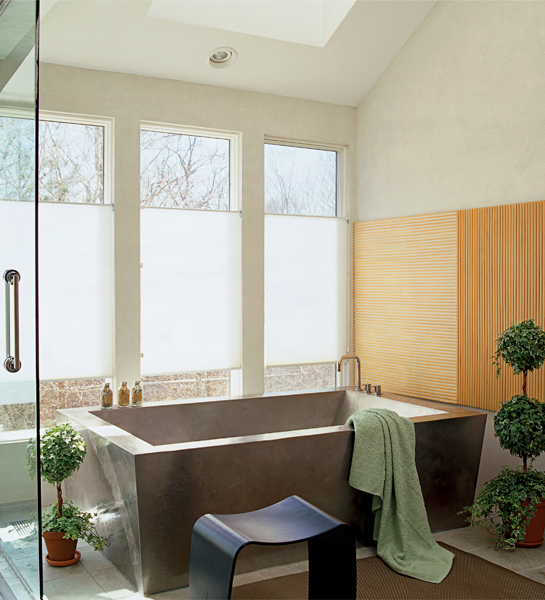
In 1983, my family and I built a vacation home in the Pocono Mountains with material salvaged from a building my father demolished in Philadelphia. Massive wood beams, reclaimed framing lumber, steel, even nails were reused and reconfigured to make what I think of as our first sustainable building, though we didnt think of it as such at the time.
This was an important lesson to learn as a first-year architecture student. The essence of living and building green, for us, has always been about living and building thoughtfully, creatively, efficiently and sensibly. We have never considered green living as an alternative lifestyle or our buildings as novelty products. We think of them as commonplace and common sense. Considering the impact of global warming on our planet, the fluctuation in non renewable fuel costs, the impact of the wars fought to protect those non renewable resources and national security threats as a result of such wars, one begins to wonder if we have forgotten the meaning of common sense. The question is not What is the cost of living green?, but rather What is the cost of living otherwise?
My brothers, a lifelong friend and I run a small and energetic development, design and construction company in Philadelphia and have, since 1997, worked and lived by the fundamental precept that green design is first and most importantl great design, and that great design does not have to cost more than poor design. Poor design is simply design that doesnt respond appropriately to ones environmentwe think of it as ir-responsible. On the other hand, response-ability in design might simply involve orienting a building respectfully and effectively on its site, or thoughtfully bringing natural light and ventilation into a room, or putting a garden on ones roof (we call it a groof) to reduce heating/cooling loads and storm-water runoff and double the outdoor garden space of the site. It could also mean planting low-maintenance, drought-tolerant and native plants around your home, or heating a floor surface (and therefore your body) rather than a volume of space (and therefore your head). It could be as simple as using paints and sealants that dont contain harmful chemicals or working with materials and people that are local, or it could involve long-term approaches, such as collecting rainwater and reusing it to irrigate your lawn, or generating heat and power from the sun for free rather than paying for it from a coal burning utility company. These all seem like intelligent, rational, cost-effective and natural ways of being, thinking and designing, dont they?
For architects, these kinds of ideas are woven into the fabric of what we do on a daily basis. But for the rest of the world, sorting through the ever-evolving ways in which one chooses to live a greener life can be challenging at best. So a clearly organized, informed book such as Green Living by Design helps us bridge the gaps in the ways we communicate, enriching the dialogue not only among ourselves as designers, but also with our clients.
When my brother Mike asked us to design the Margarido House in Oakland, California, he and his wife wanted a home that would fulfill the needs of their growing family for years to come. They wanted a home that would inspire them and their children every day, one that would make them conscious of their connection with the natural world rather than their struggle with it. They also wanted their home to be a model of sustainable living for others, inspiring them to educate themselves on the choices they have in creating a healthy home. Parts of the home we created for them appear in the pages of this book, which we believe will help to make sustainable ways of designing and living as commonplace and accessible as they are inspiring.
I look forward to the day when green is not the new black, as it has been so often described lately, but rather the old blue, tried and true. And Green Living by Design will surely serve as a helpful guide to that end. Logically organized and easy to understand, it is an excellent primer on the essentials of living sustainably. We trust the ideas in its pages will open many new green doors for the reader, which, once entered, will be impossible to exit.
Timothy McDonald
Principal of Onion Flats/Plumbob, LLC, Architect of Record for the Margarido House in Oakland, the first LEED-H Platinum custom home in Northern California
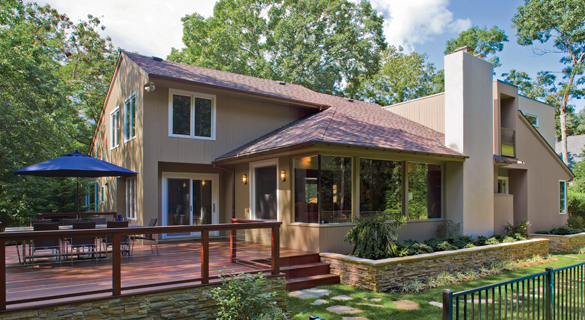
Rather than razing this house, architect Joseph Eisner adapted it within its original footprint, adding new energy-efficient windows and doors.
WHY GO GREEN?
There are so many benefits to living in a green home, and more and more Americans are choosing to take advantage of them. Living in a green home is good for your health. Its good for your pocketbooktax incentives and energy savings can make building and living in a new green home or greening an existing home less costly than building and living in a standard house. And, of course, its good for the planet. According to a recent study, green homes are expected to make up 10 percent of new home construction by 2010, up from 2 percent in 2005. Consider these specific benefits:

Leaving a portion of the roof open on an enclosed terrace surrounded by efficient windows and finished with natural materials literally brings the outdoors in.
Green Homes Are Healthier
Natural ventilation as well as the use of mechanical ventilation systemswhich bring in and filter fresh air and vent out stale airkeep indoor air clean.
The use of toxin-free materials and finishes or those with low toxicity limits indoor air pollution, which can be more harmful than outdoor pollution.
Abundant natural light boosts your mood and is vital to indoor plants, which are natural air detoxifiers.
Some green materials and home products resist mold and mildew or are antimicrobial.
Green Homes Are Cost Efficient
On a month-to-month basis, people who live in green homes save money by using less energy and less water than those who live in standard homes.
A green home can be more durable than most standard homes thanks to high-quality building materials and construction processes, which lead to lower maintenance costs and fewer repairs.


